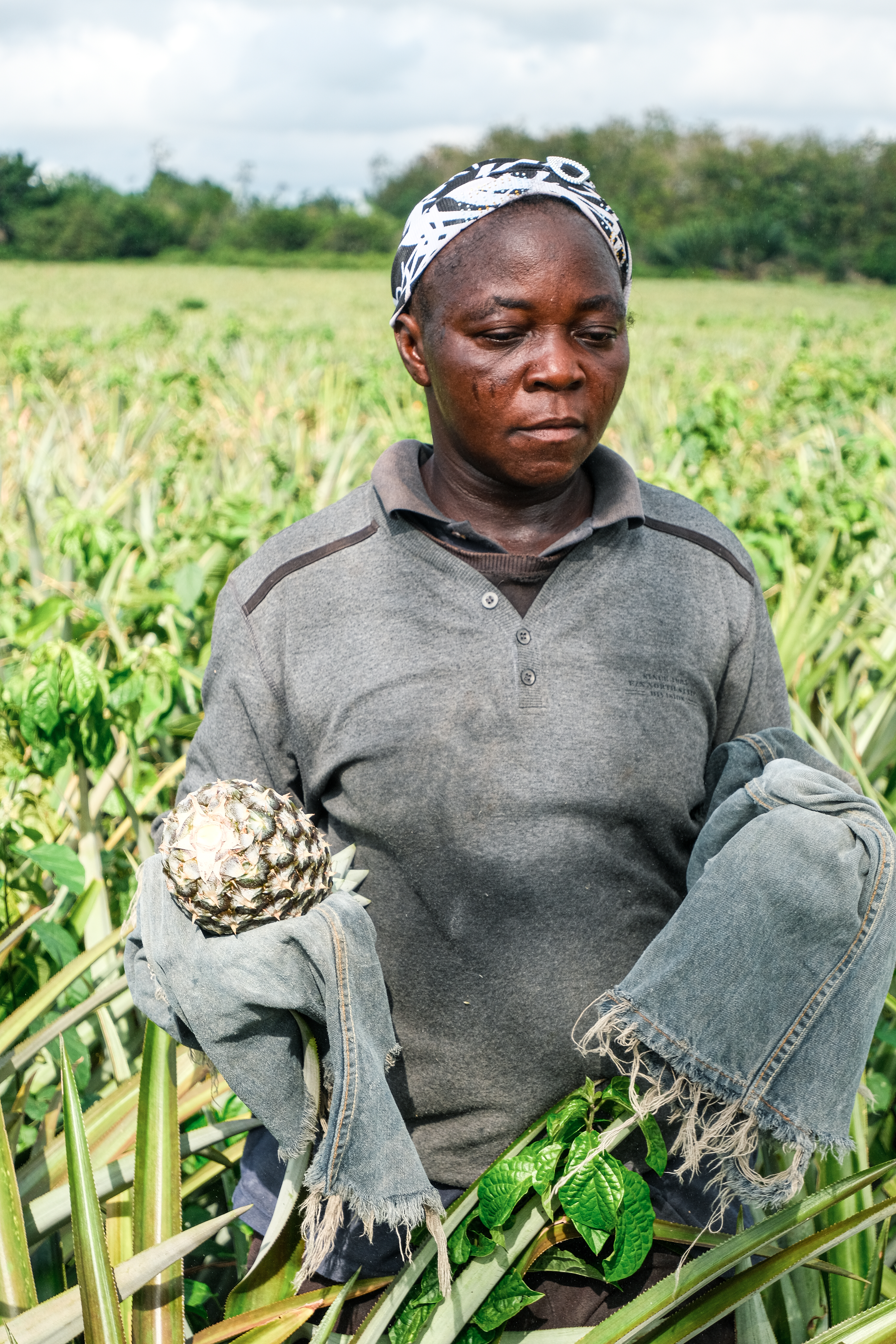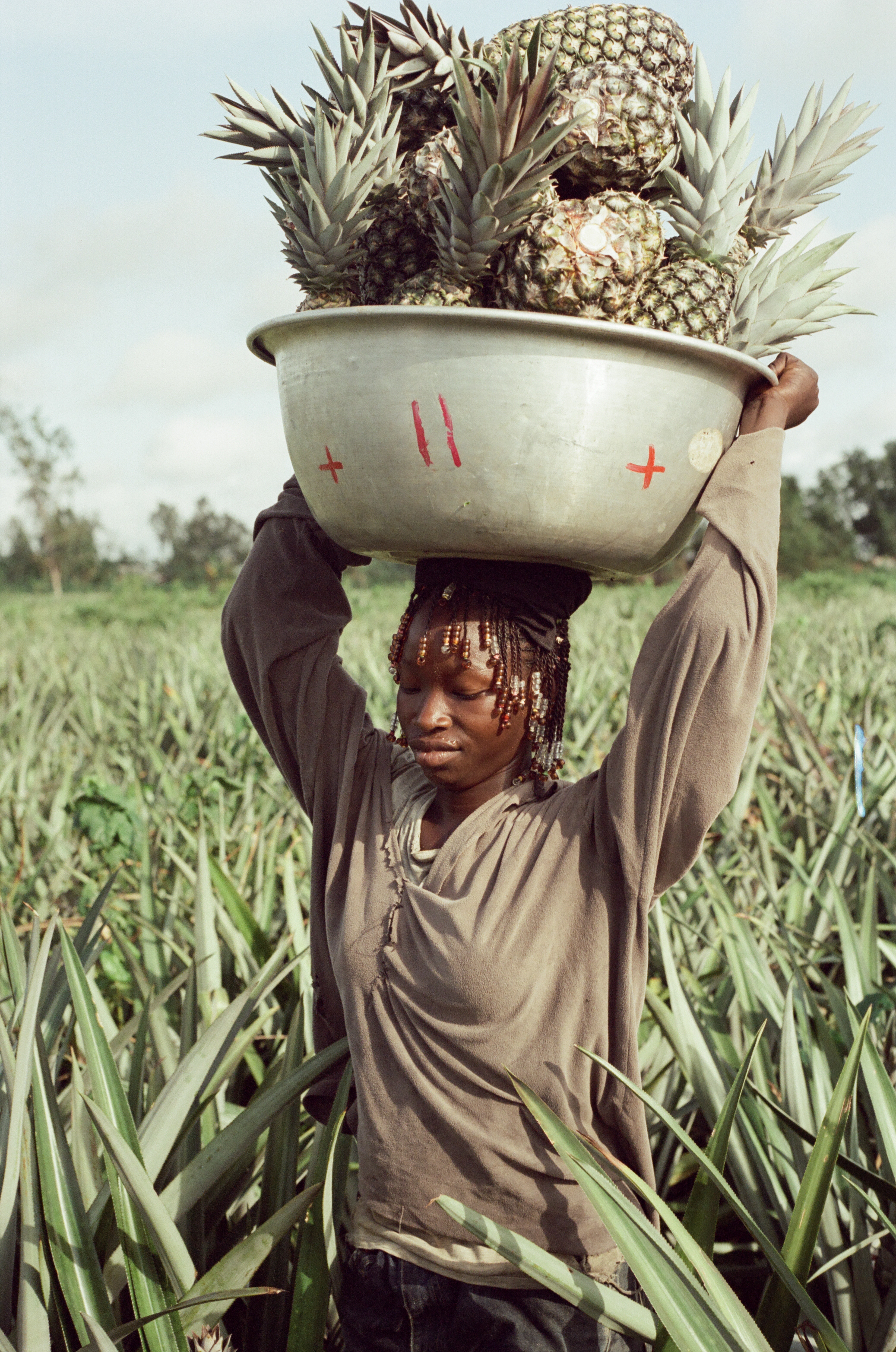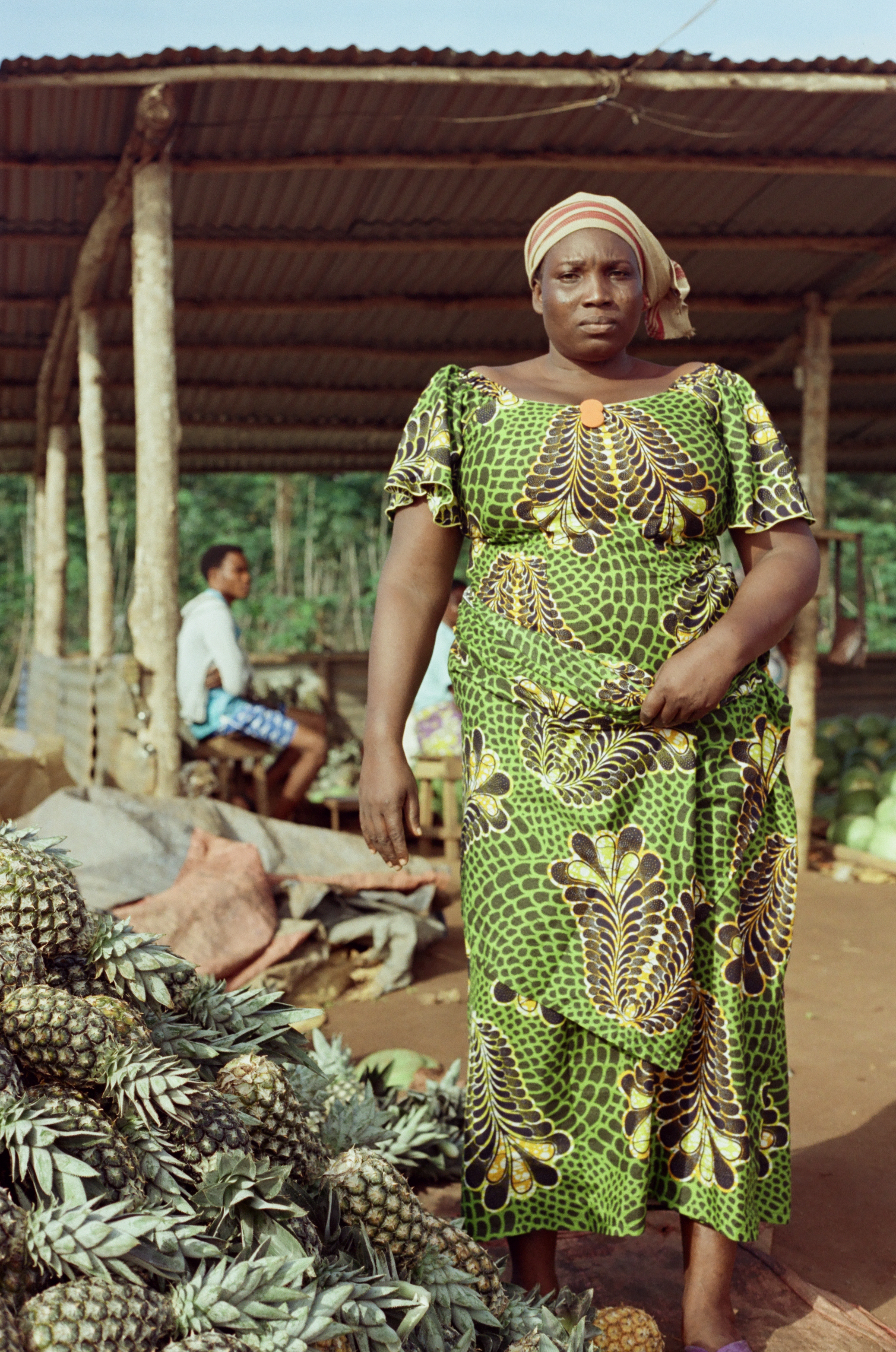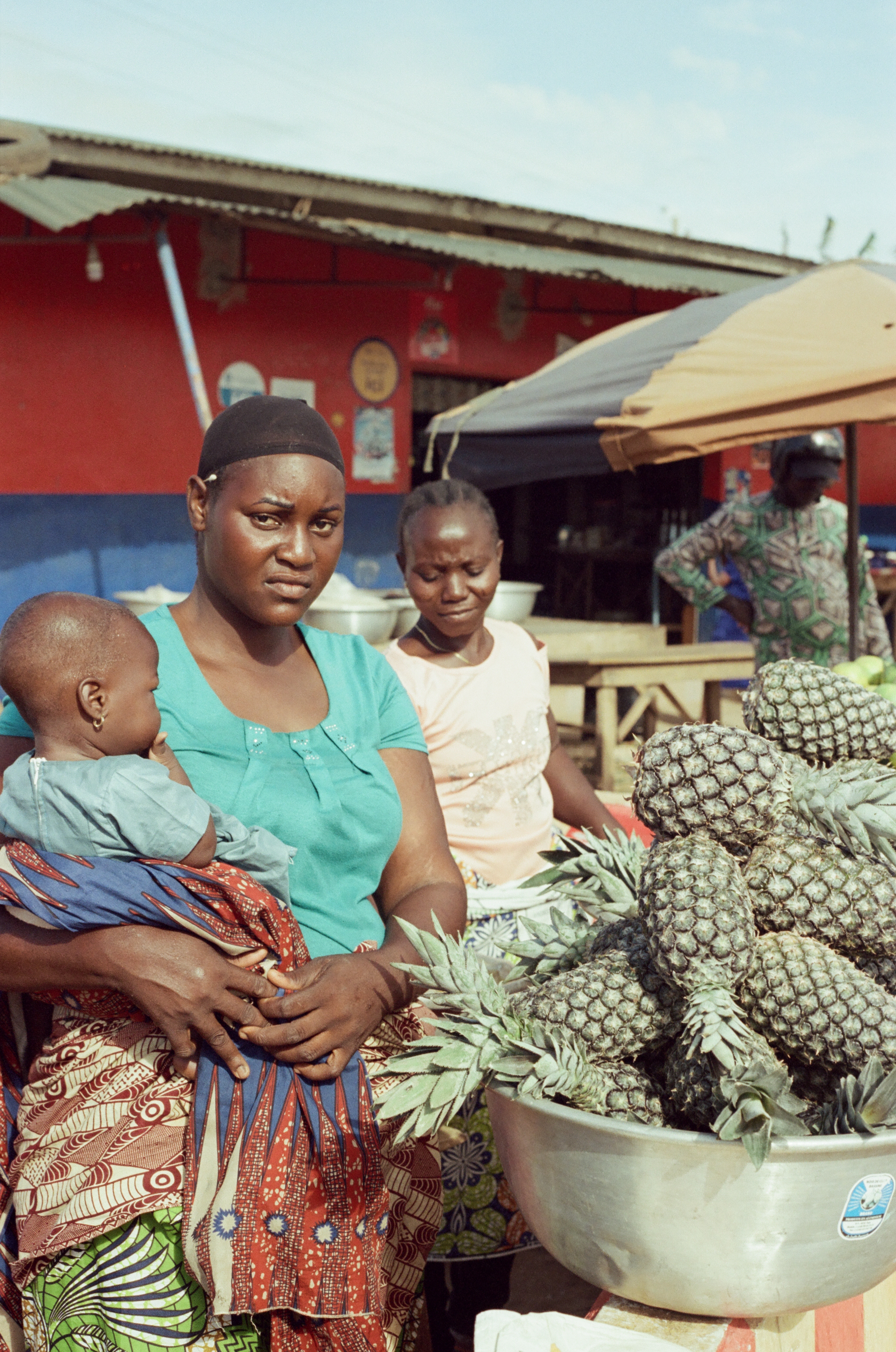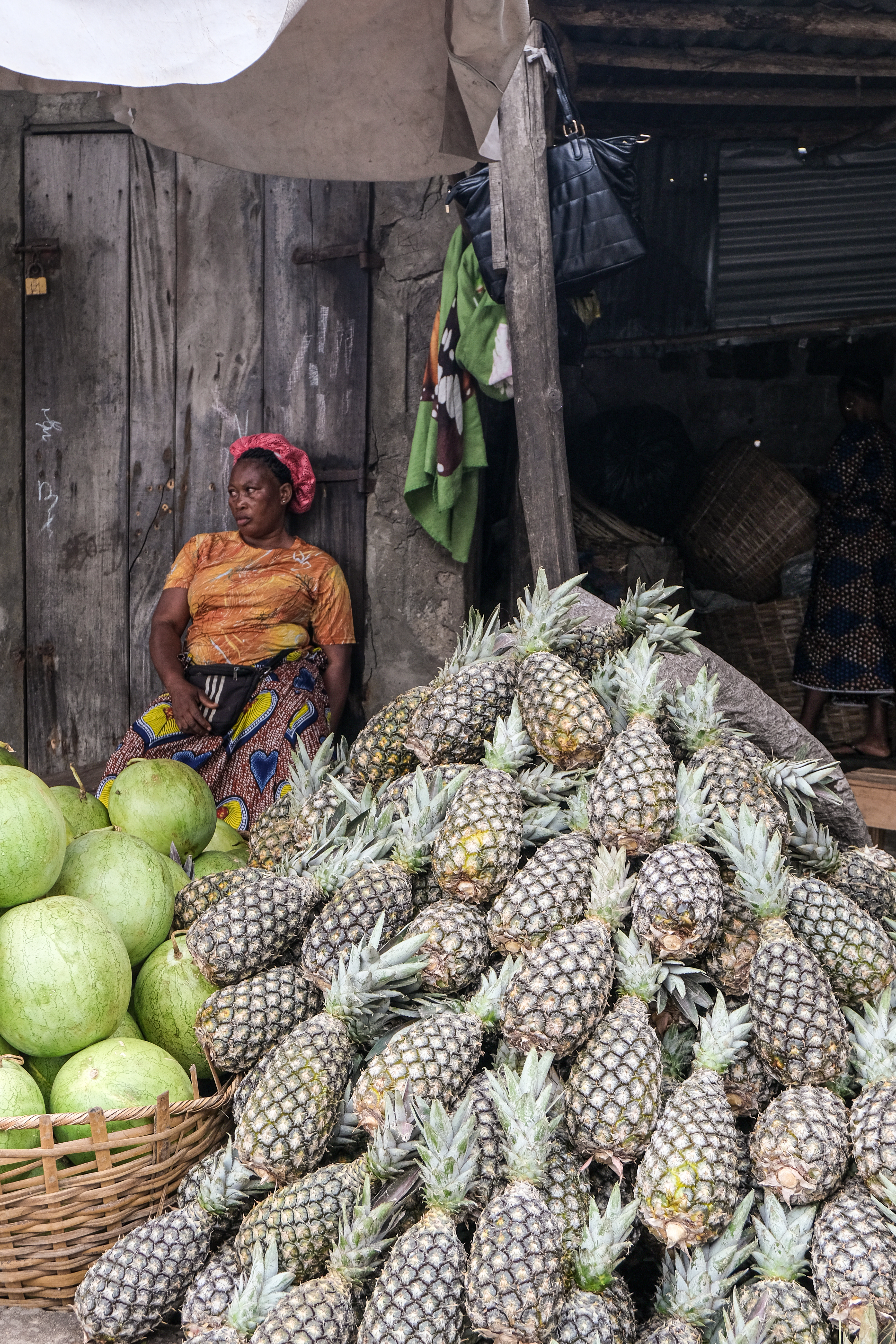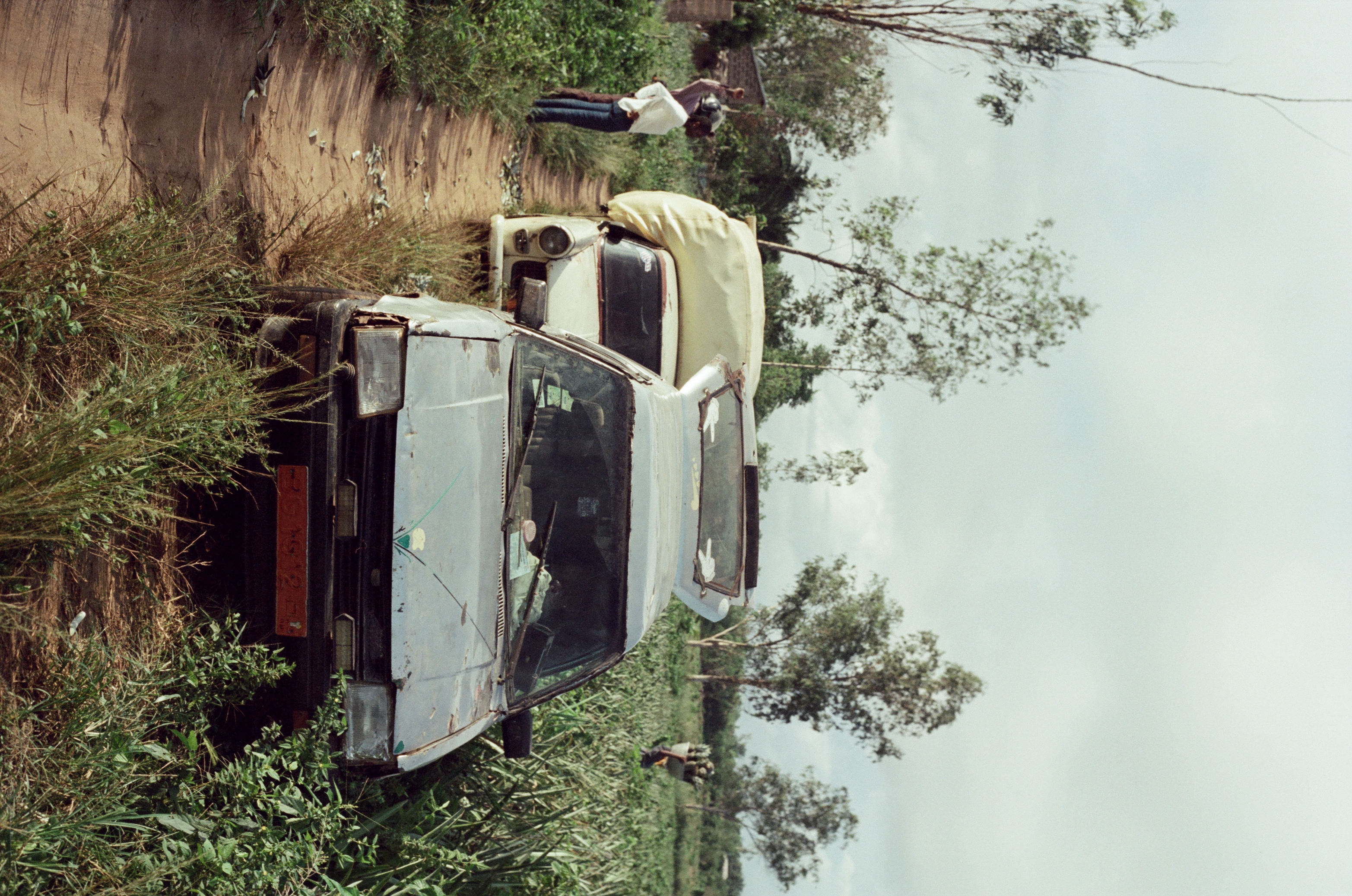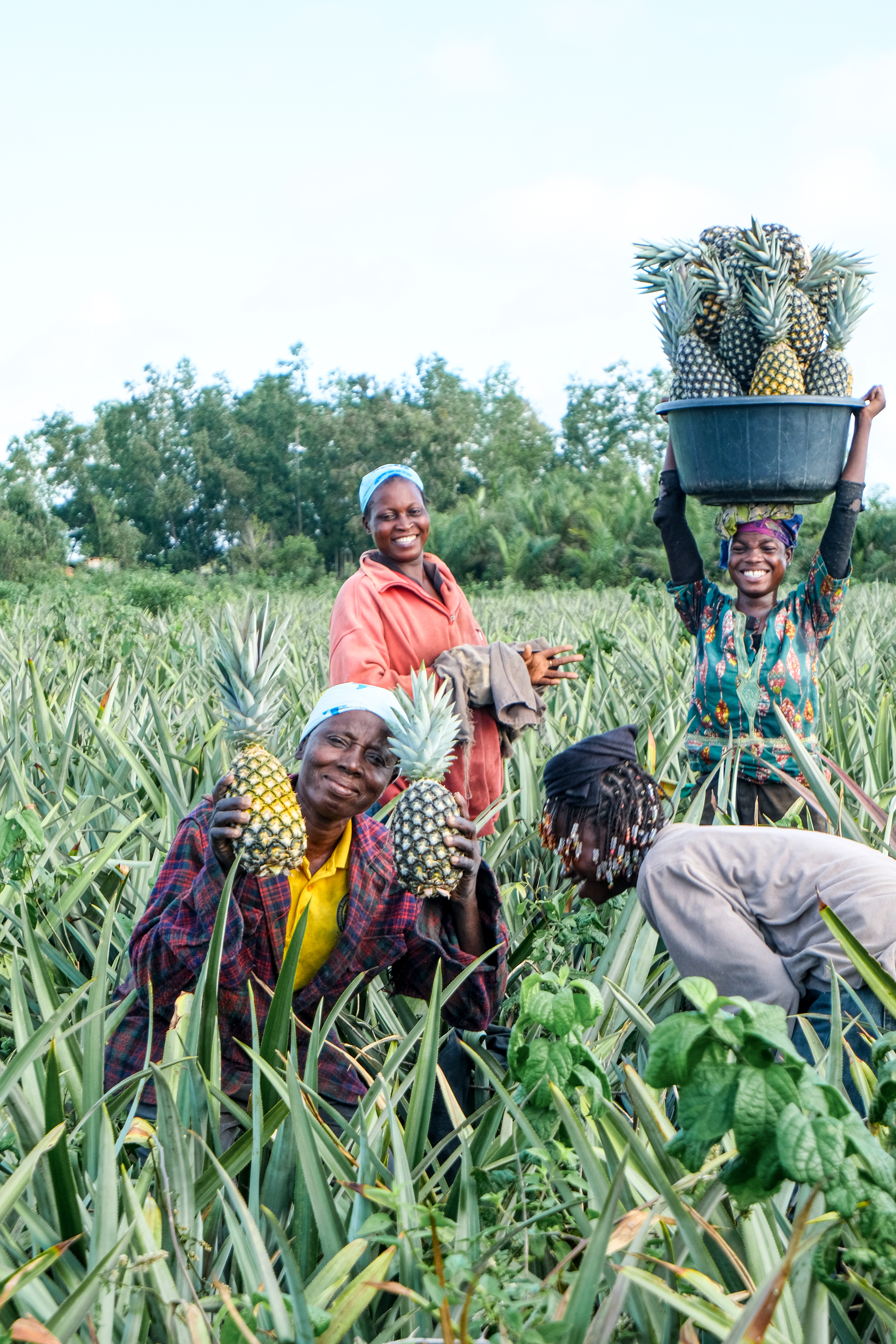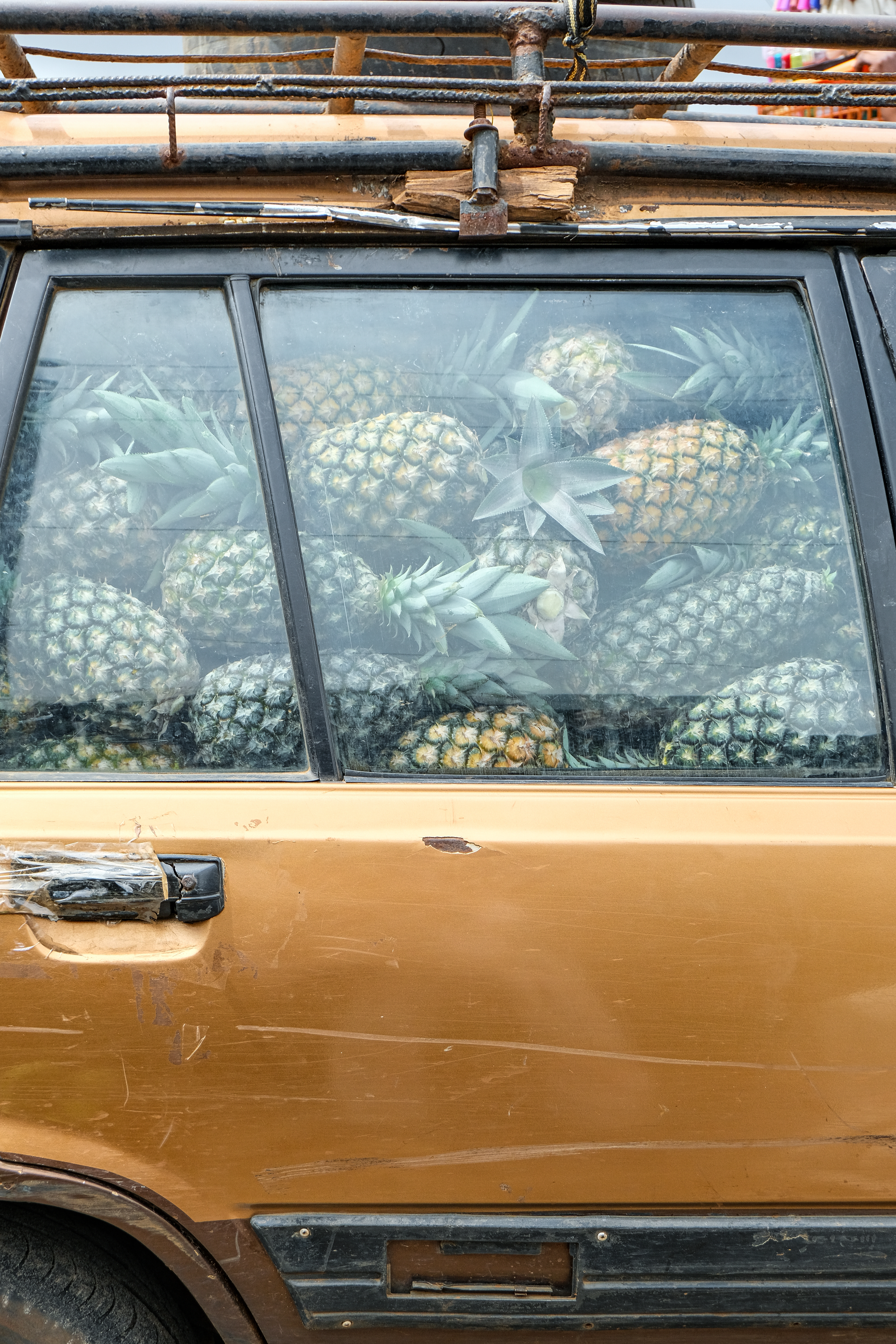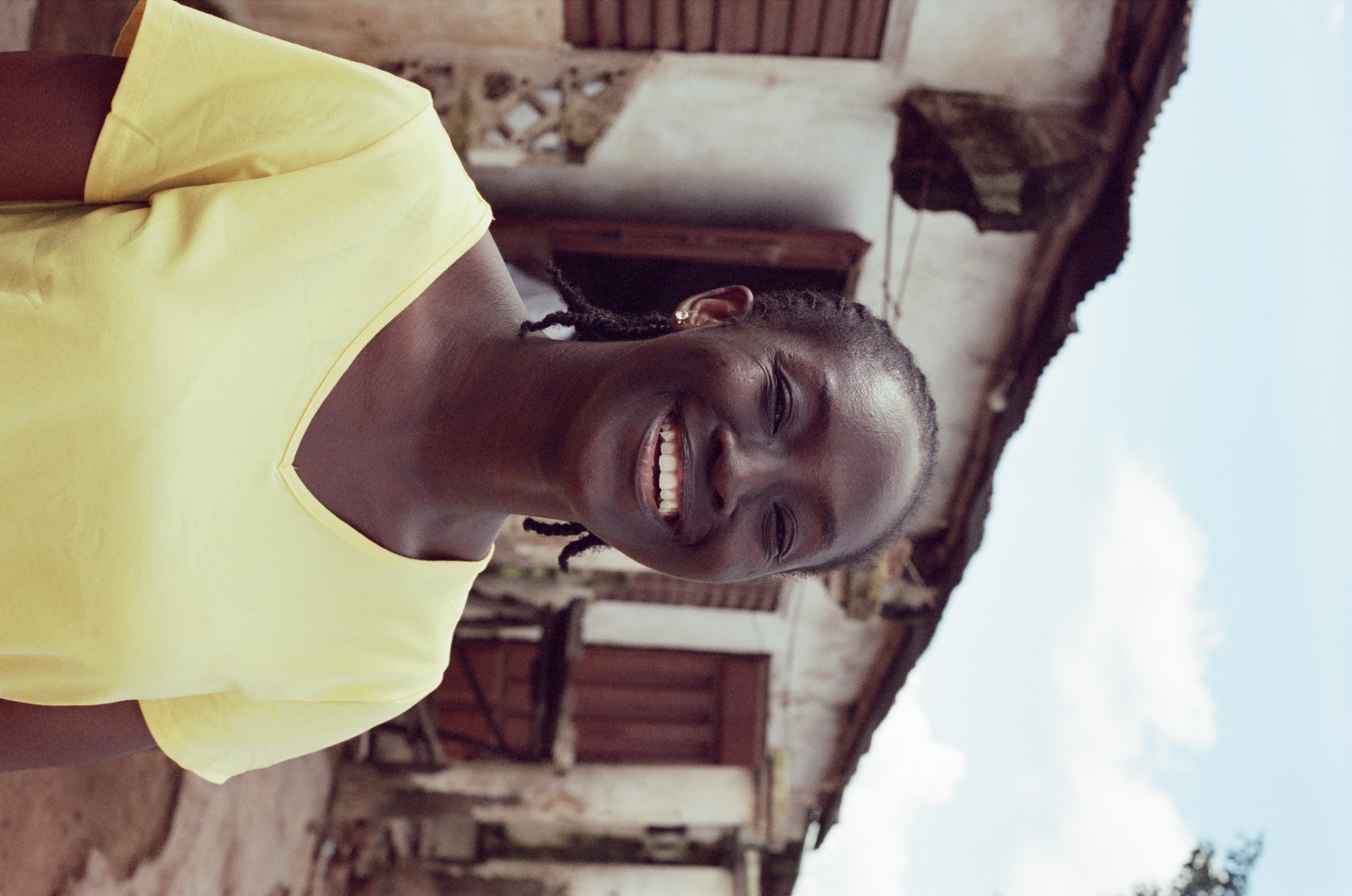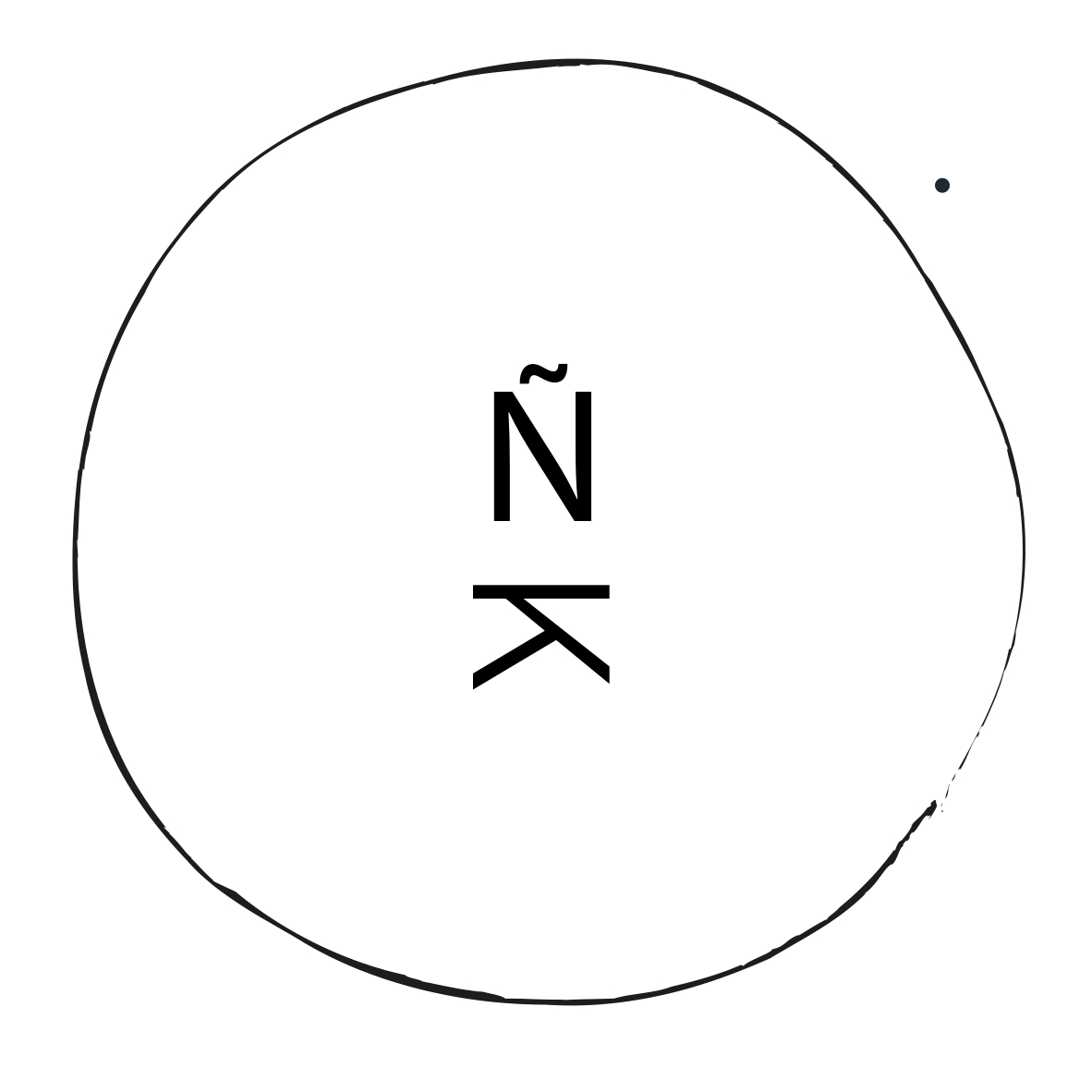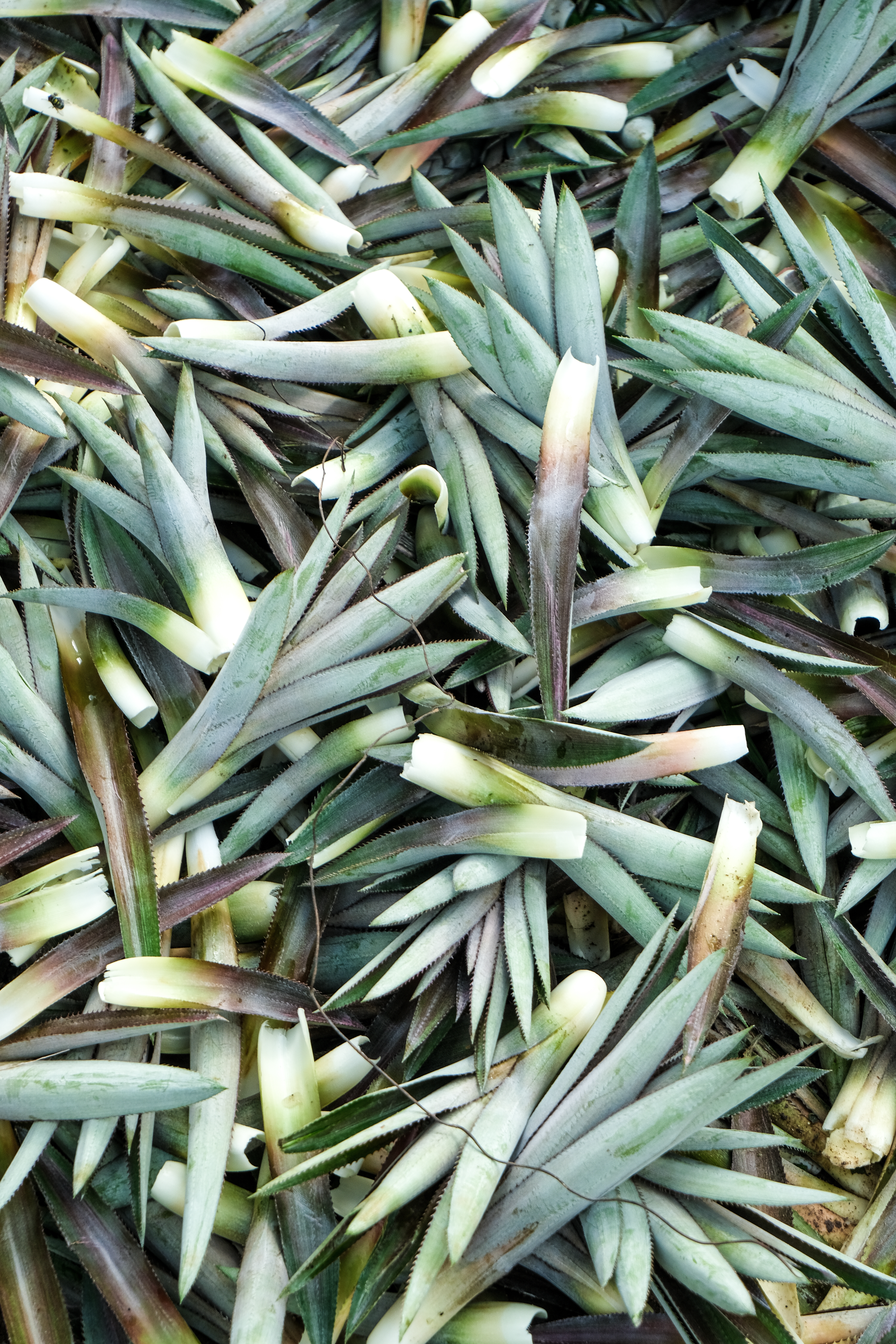This photography project was commissioned by the State of Benin with the aim of shedding light on the vital role of women in the pineapple industry—a key agricultural sector in the country. Through this work, I documented not only the journey of the fruit itself, but more importantly, the human hands that shape its path from the soil to the roadside stalls.
Shot mainly in Cotonou and its surrounding areas, the series follows the full cycle of pineapple cultivation and distribution. I immersed myself in the everyday rhythms of the women who carry this industry. From planting and harvesting in the fields, to sorting, organizing, and selling at local markets or along the roadsides, it is the women who hold the structure together. They form an unspoken but highly organized hierarchy, connecting the rural and urban, the production and the sale.
While men are present in the process, their roles are secondary and mostly limited to physical labor—loading pineapples or driving transport vehicles. The women, however, are the true architects of the system. Their knowledge, endurance, and collaboration are what keep the pineapple economy flowing, yet their contribution is often overlooked.
Benin, like many West African countries, is navigating the balance between tradition and modern development. Agriculture remains central to its economy, and pineapple is one of its most important export products. Yet, the methods of transportation and storage still present major challenges. One of the key issues addressed by this project is the way pineapples are stacked and transported, often leading to loss and damage of the fruit before it reaches the market.
The photographs serve a dual purpose: they are both a visual tribute and a research tool. On one hand, they honor the women whose labor drives this essential trade, giving them visibility and recognition. On the other, they provide valuable documentation for scientists and policymakers who are working to improve the logistics and sustainability of the supply chain.
This project is a blend of art and activism, storytelling and study. It invites viewers to see the pineapple not just as a fruit, but as the result of an entire ecosystem of effort, skill, and silent resilience—most of it carried by women whose work deserves to be seen, understood, and supported.
